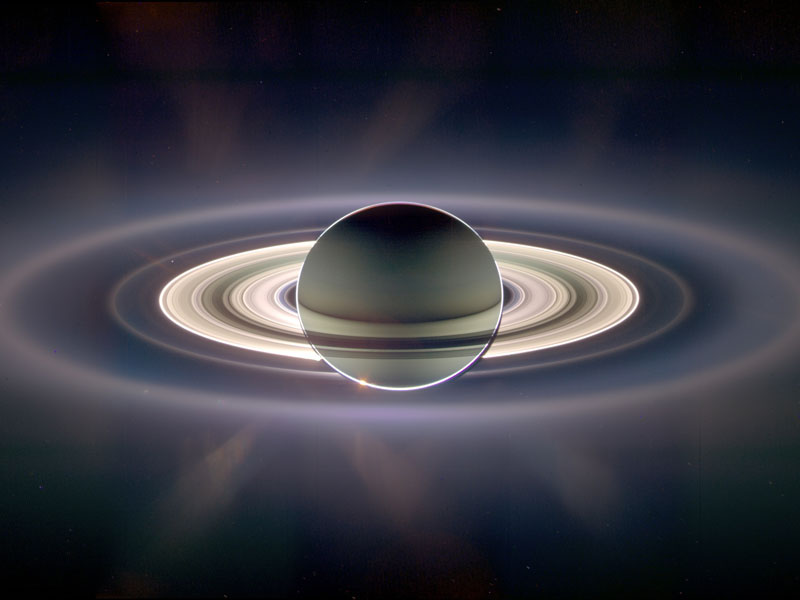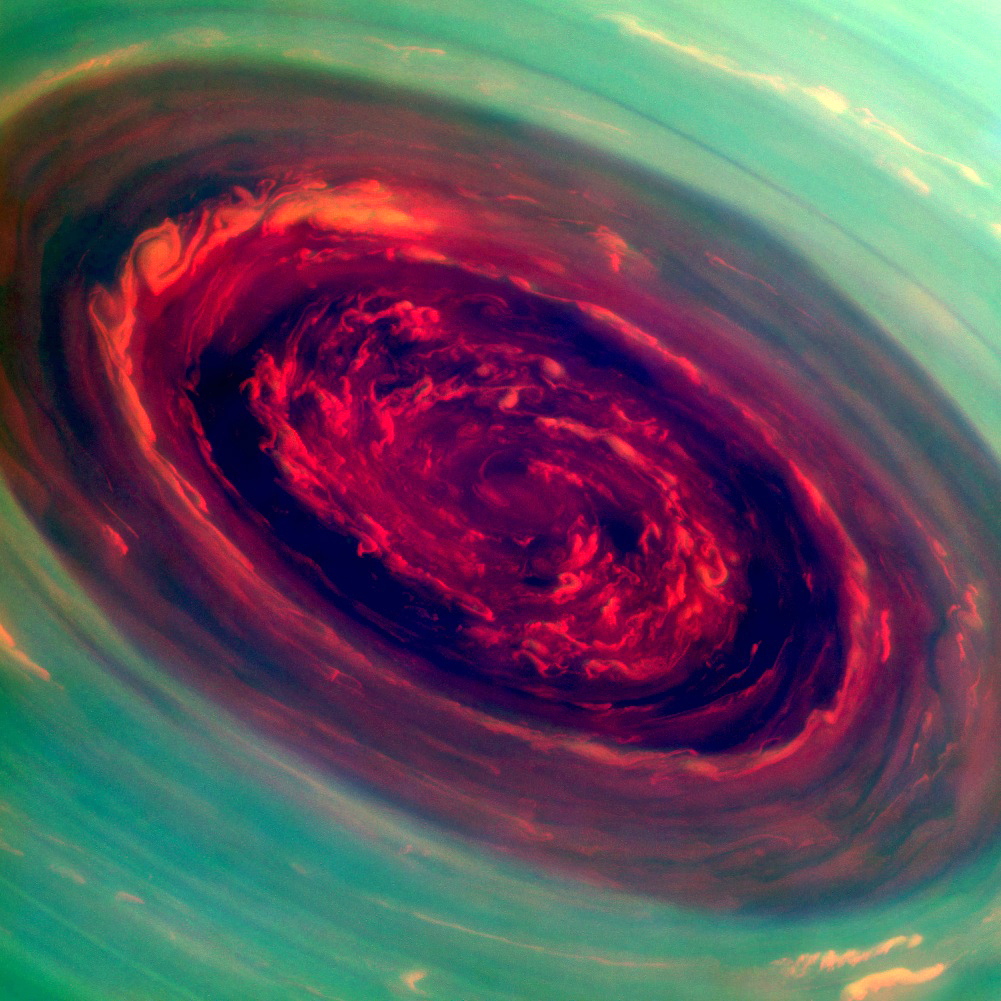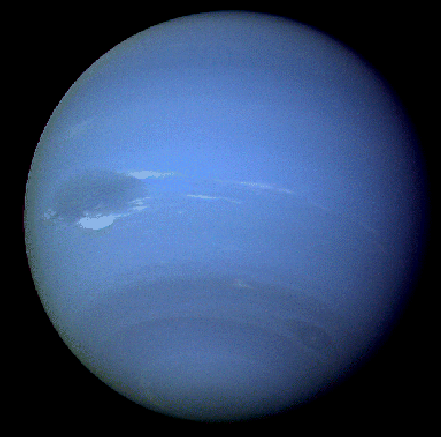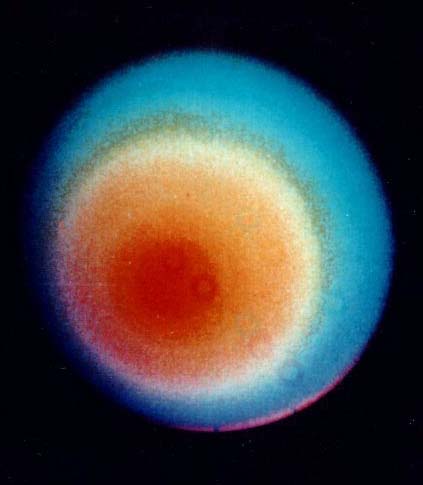 |
(to left, from NASA, Cassini Project; above, Shani, the planet Saturn, from from The Black Peacock, http://www.goloka.com/index.html)) |
Key points: Comparison of Saturn with Jupiter; comparison of Uranus and Neptune with the former two
 |
(to left, from NASA, Cassini Project; above, Shani, the planet Saturn, from from The Black Peacock, http://www.goloka.com/index.html)) |
| A different view. A solar eclipse by Saturn, viewed by the Cassini
spacecraft. The earth is the tiny dot just outside the bright rings at about the 10
o'clock position. The night-time cloud tops on Saturn are lit up by light scattered by the
rings. The outermost fuzzy ring that fills the picture is fed by ice fountains where
material is escaping from the moon Enceladus. (CICLOPS, JPL, ESA, NASA, vis
APOD: http://apod.nasa.gov/apod/ap061016.html)
|
 |
 |
Saturn, another giant planet, is very similar
to Jupiter in many respects:
Saturn differs from Jupiter in ways that reflect either its lower temperature or smaller size:
(from Nick
Strobel's Astronomy Notes. from www.astronomynotes.com )
|
 |
 |
| Storms on Saturn; the cloud patterns are similar to those on Jupiter but more subdued in color in the visible. The infrared picture to the left has been processed to bring out the detail in a huge storm at the planet's north pole (Cassini-Huygens, http://apod.nasa.gov/apod/ap130502.html). To the right is an artist's impression of the view over Saturn's cloud tops (right; Don Dixon) | |
|
Uranus |
Neptune |
|
 |
 |
 |
(from Nick Strobel's Astronomy Notes. from www.astronomynotes.com ) |
But the two planets are not completely identical:
 |
Nonetheless, the surface temperature is uniform implying that winds stir the atmosphere. (http://nssdc.gsfc.nasa.gov/photo_gallery/photogallery-uranus.html) |
|
with Jupiter by the Babylonians |
Galileo's original drawing of Jupiter and its moons. |
|
Click to return to syllabus |
||
| Click to return to Jupiter | hypertext |
Click to go to Jupiter's Moons |